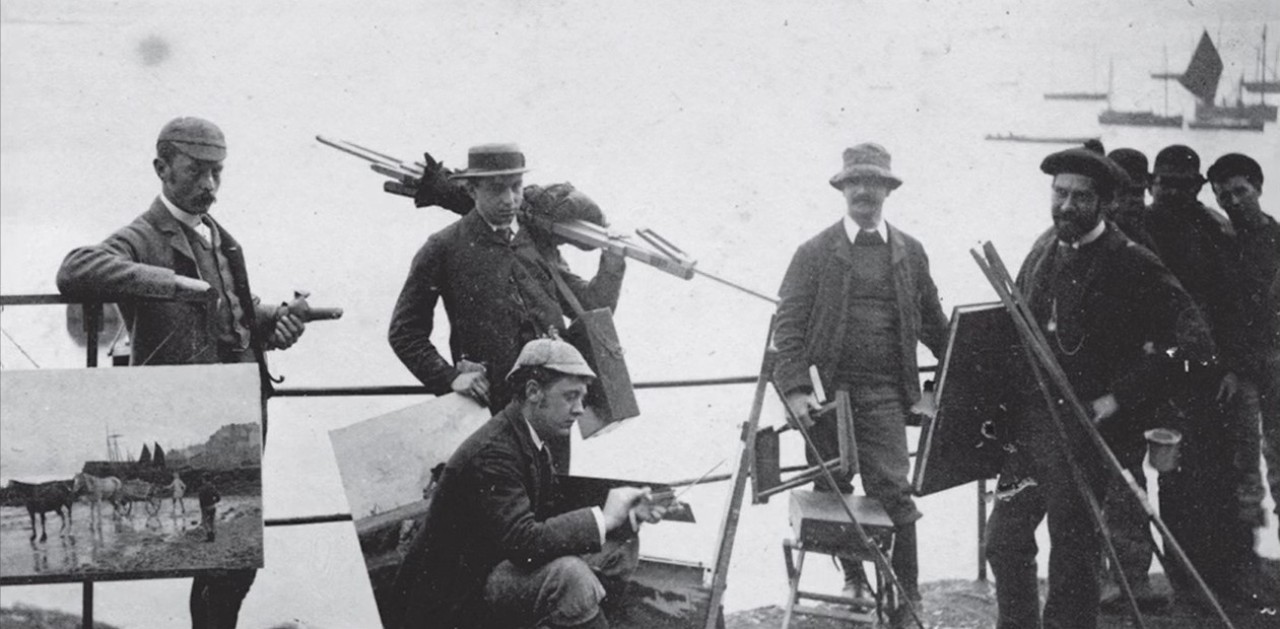Newlyn and the Arts

Newlyn and the Arts
In the early 1880’s many of Britain’s most talented artists began arriving in Newlyn. A number of these artists had trained on the continent and many had spent time in artistic colonies in France.
Newlyn offered these artists similar scenes to those they had painted in Brittany providing them with a wealth of local models and cheap accommodation within a beautiful fishing community which had been untouched by the industrial revolution.
1884 saw the arrival of Stanhope Forbes who would later become known as the emblematic figurehead of the thirty or so painters who made up the ‘Newlyn School’. The term ‘the Newlyn School’ is used to describe this group of early artistic residents of Newlyn who were bound together by their shared belief in the importance of ‘en Plein air painting and their desire to capture the lives of the local fishing and farming communities.
Other members of the group included significant names such as Walter Langley, Elizabeth Forbes (nee Armstrong), Frank Bramley, Henry Scott Tuke, Fred Hall, Norman Garstin, Thomas Cooper Gotch, Frank Wright Bourdillon, Harold Harvey and Percy Craft among many others.
It was largely through submissions to the annual Royal Academy Exhibitions that the Newlyn School painters became so well known, particularly after Stanhope Forbes’ triumph in 1885 with ‘A Fish Sale on a Cornish Beach.
So great in number were the artists of the Newlyn School that the Great Western Railway Company was forced to add additional carriages to the Penzance to London train to accommodate the number of submissions to the annual Royal Academy Exhibition by the many artists resident in Newlyn.
In a period of 20 years between 1880 and 1900, over 130 artists spent a proportion of their time working in Newlyn.
In 1899 as the number of artists in Newlyn began to decline Stanhope Forbes and his artist wife Elizabeth set up the Forbes School of Painting, reinvigorating the colony and attracting a new generation of artists to Newlyn including Dod and Ernest Proctor, and in time, Alfred Munnings and Harold and Laura Knight.
Currently, the largest collection of work by the Newlyn School artists is held at Penlee House Gallery, Penzance.
Newlyn was, however, not exclusively a colony of painters; in the 1890s the Newlyn Industrial Class was established by John D Mackenzie to provide additional work for fishermen. These artist-led classes included crafts such as jewellery, copper, enamel work and textiles, sited in a workshop on Champion Slip. Classes ceased in 1939 at the outbreak of WW2, however, copper working continues in Newlyn to this day; see the talented copper worker Michael Johnson at The Copperworks Newlyn.
The well-known Tremaen and Troika potteries were based in Newlyn from the end of the 1960s onwards.
The influential silk designer and manufacturer Crysede were based in Newlyn throughout the 1920s. Alec George Walker brought machinery from Yorkshire and founded Crysede. In 1923 Walker went to Paris and met Dufy and Zadkine, who encouraged him to create his own designs. Crysede sent mail orders to Paris, America and Australia.
Newlyn remains the home of many artists to this day. For a searchable database of artists associated with this area, please visit The West Cornwall Art Archive at Cornwall Artists.
See here the Newlyn archive, with the purpose to preserve, store and share documents, pictures, film and audio material relating to Newlyn and its people Newlyn Archive.
There is a remarkable collection of information and photographs about the history of Newlyn. Regular exhibitions are held at Newlyn Centre.